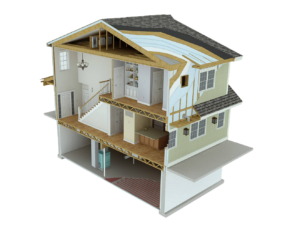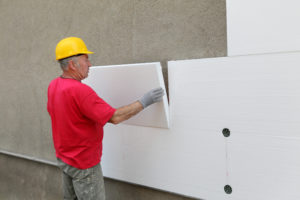Flame Retardants in Building & Construction
Learn about the benefits of flame retardants and their use in plastic building products.
In a Building Fire, Every Second Counts
Flame retardants reduce:
- The probability that a heat or ignition source will initiate a growing, spreading fire.1
- Heat release rate of burning materials.
- Growth of a fire.
Flame retardants increase:
- Time to ignition.
- The time available to exit the building and for emergency personnel response.2
Most combustion by-products are toxic regardless of the type of material burned or the presence of flame retardants.
Each fire that flame retardants avert means that toxic and environmental hazards from that fire have been prevented.
What are flame retardants?
Flame retardants (FRs) are materials that help to prevent or delay a fire from starting and to slow the spread of a fire once it starts. Because there are many different types of FR technologies that vary in composition and function, they are often tailored to satisfy the specific performance needs for a material.
What flame retardants are used in plastic building products?
Flame retardants commonly used in products, such as foam plastic insulation, include polymeric FR that is typically used in polystyrene insulation, and tris-(1-chloro-2-propyl) phosphate (TCPP) in products, such as spray polyurethane foam and polyisocyanurate board stock.
Why are flame retardants necessary?
 Because many products, including foam plastic insulation, are combustible, building and fire codes place strict fire performance criteria on these materials and their use in building applications. The combination of fire tests and prescribed construction details for a given application combine to ensure the safe use of foam plastic insulation products.
Because many products, including foam plastic insulation, are combustible, building and fire codes place strict fire performance criteria on these materials and their use in building applications. The combination of fire tests and prescribed construction details for a given application combine to ensure the safe use of foam plastic insulation products.
Experts recognize that the use of flame retardants help to prevent fires from starting and to slow their spread, both of which are crucially important when every second counts.3 Manufacturers use flame retardants in finished products to help meet the stringent fire performance criteria for flame and smoke spread required by government regulations.
“Flame retardant” refers to a function, not a family of chemicals. A variety of different chemistries with different properties and molecular structures provide flame retarding attributes when used in certain products. In some product applications, it is possible to combine these chemicals to maximize effectiveness. Finished products that incorporate flame retardants and meet testing requirements then identify that the product complies with building code fire performance standards for a particular residential or commercial application.
Flame retardants and innovations in chemistry help play a critical role in enabling energy-efficient products to meet the necessary safety criteria today and for the future.
How are flame retardants regulated for safety?

Worker placing styrofoam sheet insulation to wall at construction site
The U.S. Environmental Protection Agency (EPA) has federal authority to limit or even prohibit the use of a chemical if the agency concludes that the substance presents or will present an unreasonable risk of injury to health or the environment. The Toxic Substance Control Act (TSCA) and more than a dozen other federal laws and regulations, including consumer product safety laws and product liability laws, provide further oversight of chemicals in commerce. Similar regulations are in place across the globe.
Should flame retardants be eliminated from foam plastic insulation?
Any insulation material meeting the performance requirements mandated by the building code, with or without FRs, is accepted for use in buildings. As with all other building materials, the code demands fire performance of the insulation under defined conditions and is neutral as to how the insulation achieves that performance. The building code represents long-standing requirements, based on many decades of experience and are developed using an exhaustive consensus process that should not be summarily dismissed or altered without sufficient scientific justification.
1. Toxic Hazards to Fire Fighters, Including Effects of Fire Retardants, During Fires & Post-Fire Investigation Activities,” Prof. Purser, Hartford Environmental Research, 2009. https://www.nist.gov/system/files/documents/el/fire_research/4-Purser.pdf
2. Hazard Comparison of Fire-Retarded & Non-Fire Retarded Products,” Vytenis Babrauskas, et.al., July 1988. https://nvlpubs.nist.gov/nistpubs/Legacy/SP/nbsspecialpublication749.pdf
3. Blais, M.S., Carpenter, K. & Fernandez, K. Comparative Room Burn Study of Furnished Rooms from the United Kingdom, France and the United States. Fire Technol 56, 489–514 (2020). https://doi.org/10.1007/s10694-019-00888-8.

